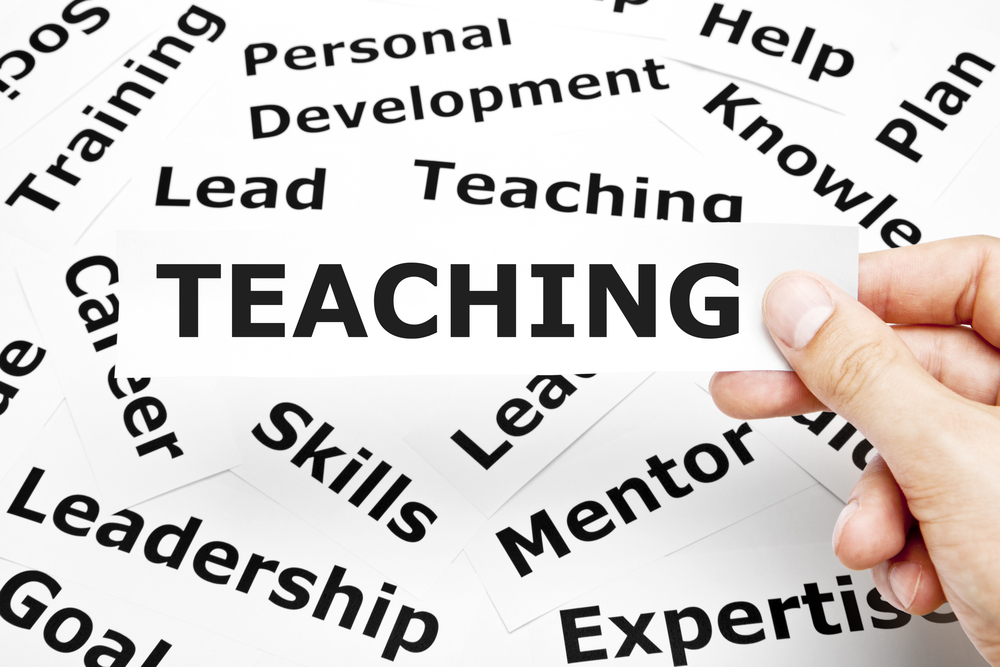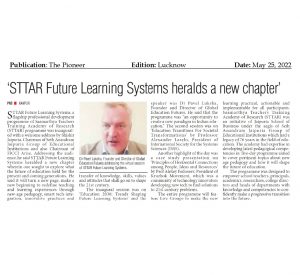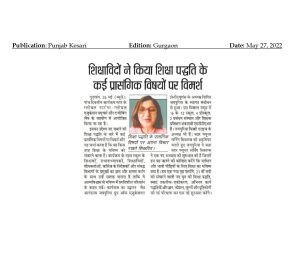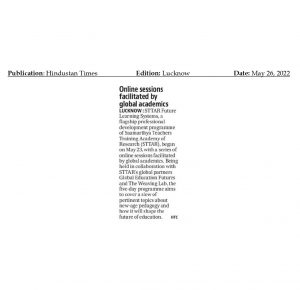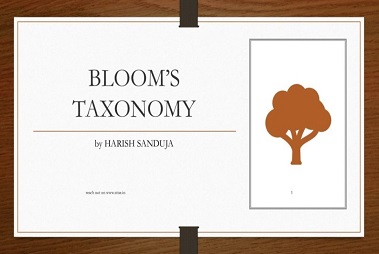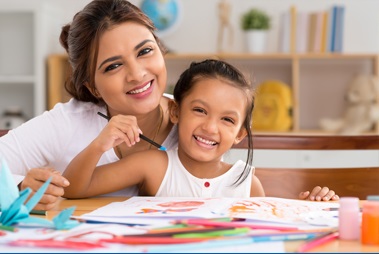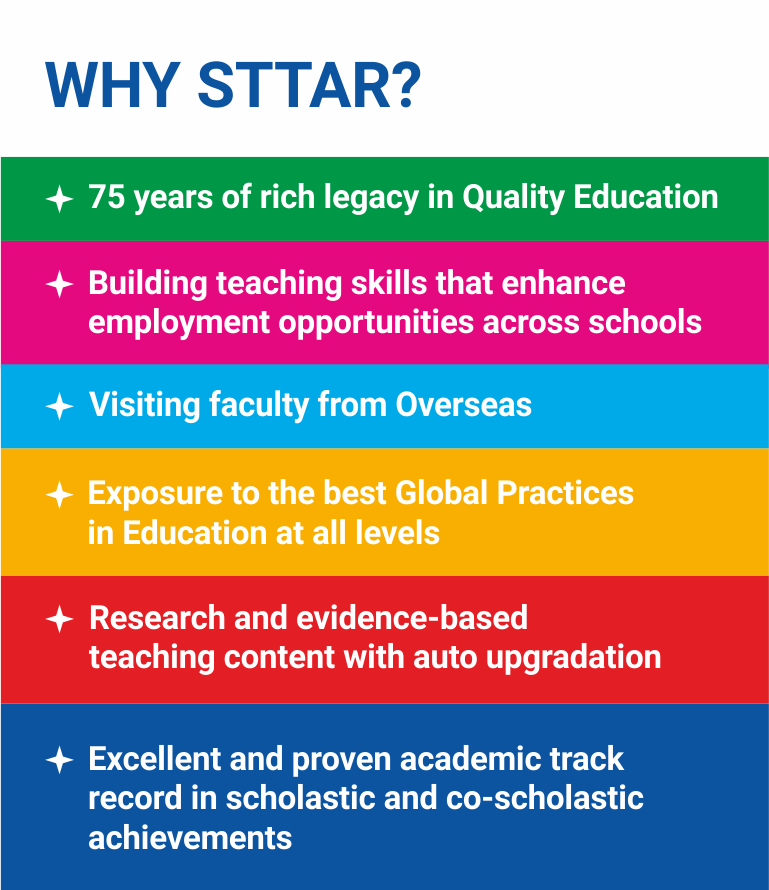How can Teachers Training Programs help Educators in Making Learning Interactive
 Research shows that children learn better when they are actively engaged in the classroom. According to Daniel Goleman, a famous psychologist, the brain is the last organ of the body to become anatomically mature. It keeps growing until the mid-20s. For this reason, it becomes vital to keep children focused on tasks that will build their neural circuitry for cognitive development.
Research shows that children learn better when they are actively engaged in the classroom. According to Daniel Goleman, a famous psychologist, the brain is the last organ of the body to become anatomically mature. It keeps growing until the mid-20s. For this reason, it becomes vital to keep children focused on tasks that will build their neural circuitry for cognitive development.
In an age of frequent disruptions, students’ attention span has, in general, witnessed a downward trend. This, in turn, has given rise to many academic as well as socio-emotional concerns. Students, especially after the pandemic, are more unsettled than ever. Many surveys have revealed that apart from technology and excessive use of social media, which are the biggest source of distraction, there are other sources of stressors linked to anxiety and lack of social skills that have caused hindrance to learning both in school and at home.
Teachers are at their tether’s end as they attempt to grapple with various challenges to keep the students motivated. In order to shut out distractions, teachers will need to create interactive learning environment where they are able to harness their potential and students uncover their intrinsic motivation for learning.
It then becomes imperative for schools and institutions to create an interactive learning environment where the students develop a sense of purpose and take ownership of their learning.
Passive teaching methodologies where students were expected to regurgitate all the information learned is on the decline. Educators are now looking out for innovative strategies to increase purposeful student involvement. Boosting student engagement has taken precedence at all levels of learning now.
The question that arises then is: What is interactive learning?
Interactive learning pedagogy is a kind of approach that is designed to reach out to different types of learners through stimulating technology infused with activities and discussions for purposeful student engagement. Research from the Stanford University School of Medicine indicates that “Interactive learning actively engages the students in wrestling with the material. It reinvigorates the classroom for both students and instructors.”
The relevance of interactive learning can be observed when students are actively engaged through hands-on learning, working collaboratively with their peers displaying critical thinking and decision-making skills with improved social and emotional skills.
There are many forms and types of Interactive learning, which may be implemented differently so long as it succeeds in establishing a learning environment that encourages and strengthen critical thinking and problem-solving skills in students. Interactive learning can be planned and implemented with or without technology, each activity needs to be planned thoroughly so as to develop a set of specific skills.
Various case studies have proven that interactive learning methods when planned with definite objectives harmonizes with positive learning outcomes and influence students to see the concepts taught in a whole new light. The present time demands educators to be adept with interactive learning tools and engaging content that should promote an immersive learning environment with distinct learning outcomes. For creating an interactive learning environment, teachers’ skill level is of utmost importance. Apart from having good domain knowledge, they need to be innovative so as to make their students more engrossed with the subject matter.
Teacher training on interactive learning pedagogy, be it with or without technology, should focus on guiding them on how to frame questions that evoke good responses, discussions, and tools for hands-on activities. Training for creating interactive content and delivery techniques must ensure a learning atmosphere for every student where they acquire the necessary skills to be future-ready.
Thorough guidance needs to be provided to the teachers so that they are well-versed with the interactive tools and tech apps to create learning opportunities for students that will sharpen their critical thinking and problem-solving skills. Acquisition of new knowledge and skills, by itself, is not sufficient. What is more important is how these skills and knowledge can be translated into practice. Schools must invest to provide essential amenities and decent educational infrastructure to maximize the accessibility and effectiveness of the trainings given to the teachers.
Interactive learning pedagogy might look easy to adapt to; however, it is not all plain sailing once schools and institutions commit to implementing it. All stakeholders involved need to be well-oriented towards it or else it will end up leading to class interactions to chance.
Source: Easy Shiksha
Link: https://news.easyshiksha.com/how-can-teachers-training-programs-help-educators-in-making-learning-interactive/
Published on: 11th October 2022





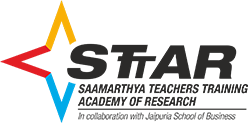
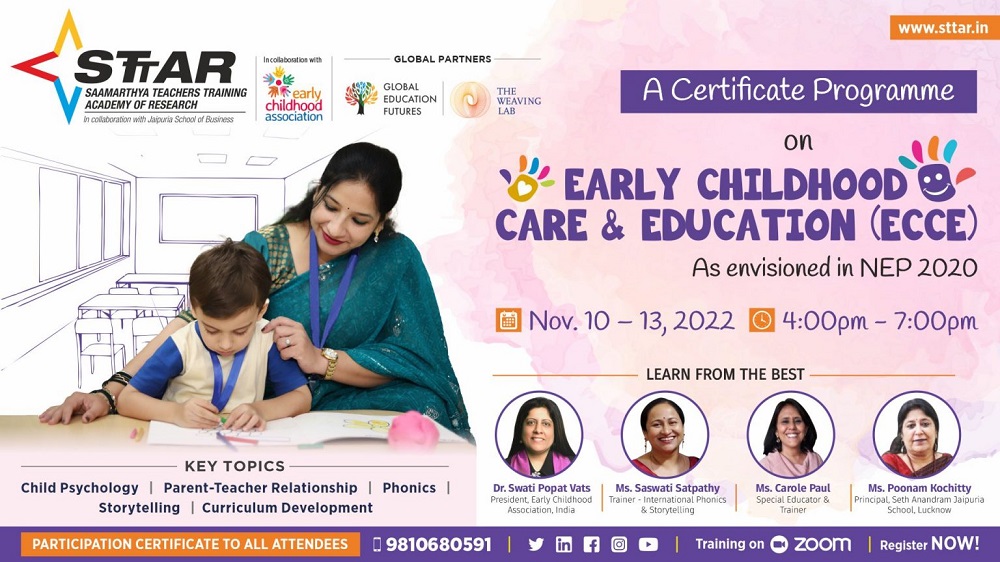

 Sushma Raturi is an enthusiastic professional educator with over 25 years of varied work experience in the field of education. She is an alumna of St. Mary, Shillong, who after obtaining a gold medal in her post-graduate course in Public Administration, decided to do her Bachelors in Education to pursue her childhood dream of being an educator. Currently, she is working with Seth Anandram Jaipuria Group of Schools as Head of Teaching, Learning, and Training. She is Member Secretary of the Academic Council of Saamarthya Teachers Training Academy of Research (STTAR), a premier teachers’ training institute that aims to develop teaching competencies based on extensive research on all aspects of education.
Sushma Raturi is an enthusiastic professional educator with over 25 years of varied work experience in the field of education. She is an alumna of St. Mary, Shillong, who after obtaining a gold medal in her post-graduate course in Public Administration, decided to do her Bachelors in Education to pursue her childhood dream of being an educator. Currently, she is working with Seth Anandram Jaipuria Group of Schools as Head of Teaching, Learning, and Training. She is Member Secretary of the Academic Council of Saamarthya Teachers Training Academy of Research (STTAR), a premier teachers’ training institute that aims to develop teaching competencies based on extensive research on all aspects of education.